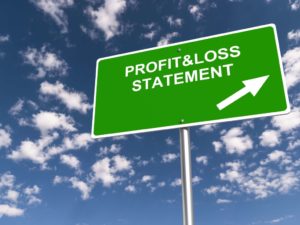
Liabilities reflect a company’s financial obligations, while expenses represent the costs of running the business. Liabilities are like long-term commitments, while expenses are the day-to-day costs that keep the business engine running smoothly. These liabilities are paid with current assets, which include cash, accounts receivable, liquid assets, etc. Remember, debts (maturing within 1 year or less) will also come under current liabilities. Current liabilities are usually paid with current assets; i.e. the money in the company’s checking account. A company’s working capital is the difference between its current assets and current liabilities.
Where are expenses in financial statement?

While liabilities & expenses are used in similar contexts, they are distinct accounting terms, & each plays a distinct role. Liabilities are future financial obligations for which Online Accounting a company is accountable, while expenses are accounting records of money spent during a specific period to earn revenue. In its most basic sense, a liability is a requirement that must be fulfilled. Some liabilities have clear repayment plans and terms, while others might only need to be paid if certain events happen or if specified conditions are met.

Stay updated with the Sage Expense Management newsletter

Examples of liabilities include deferred taxes, credit card debt, and accounts payable. Liabilities are an operational standard in financial accounting, as most businesses operate with some level of debt. Unlike assets, which you own, and expenses, which generate revenue, liabilities are anything your business owes that has not yet been paid in cash. Liabilities represent the financial obligations and debts of an individual, company, or organization. These obligations arise from past transactions or events, and they require future sacrifices of economic benefits. Liabilities are a crucial component of the balance sheet, providing insights into an entity’s financial health and its ability to meet its short-term and long-term obligations.
Accrued expenses on the balance sheet
Short-term loans and accrued expenses fall under current liabilities because they are due within a year. These include wages payable, such as salaries earned but not yet paid. Interest payable is another example, covering interest on short-term loans. They tap into the long-term debt market, borrowing funds for more than a year. This influx of cash can fuel expansion, fund projects, or simply keep the lights on.
- Finance records a $10k inventory addition and a matching accounts payable liability the day the shipment lands.
- These liabilities ensure that expenses are recognized in the period they are incurred, even if the payment has not yet been made.
- Companies must stay informed about these regulations to avoid penalties and ensure that their tax filings are accurate and compliant with local laws.
- AP typically carries the largest balances because they encompass day-to-day operations.
Nick Frank, Capital
Some may shy away from liabilities while others take advantage of the growth it offers by undertaking debt to bridge the gap from one level of production to another. Here are some of the use cases you may run into when understanding the uses of assets and liabilities. This formula is used to create financial statements, including the balance sheet, that can be used to find the economic value and net worth of a company. Below we’ll cover their basic definitions and functions, how they factor into the balance sheet and provide some formulas and examples to help you put them into practice. Long-term liabilities are paid with fixed assets like equipment, non-liquid assets, equity, investment, etc.

Their experience, training, and familiarity with QuickBooks mean they often spot and fix more complex issues faster. It’ll be cheaper to use their services instead of losing billable hours trying to solve it yourself. If QuickBooks Accountant you’ve spent a long time looking for an error but can’t find it or you’re unsure how to fix it, contact your accountant or bookkeeper.
- While liabilities represent what a company owes, assets represent what it owns or controls, which provides economic value.
- Common types of liabilities include current liabilities, noncurrent liabilities (also known as long-term liabilities) and contingent liabilities.
- When the liability gets eventually settled, the liability account will be debited and the cash account credited from which the payment took place.
- To record debts in your books, you need to know the different kinds of liabilities.
- Accurate expense recognition helps in providing a true representation of profitability, aiding investors and management in making informed decisions.
What is a Chartered Accountant (CA) and How to Become One?
- Misclassifying an expense as a liability, or vice versa, can distort financial reports and lead to inaccurate assessments of a company’s performance.
- Accrued expenses are those that have been incurred but not paid yet.
- Failure to account for accrued liabilities can lead to misstated financial statements.
- An expense reduces net income immediately, whereas a liability is an obligation recorded on the balance sheet until it is settled.
- Like liabilities, businesses can have current and fixed assets (aka noncurrent assets).
A simple example of a liability is a bank loan that obligates a business to pay interest and the principal amount of the borrowed loan. Another example of a liability is trade payables that arise when a business buys a product or service from a supplier on credit. Because accrued expenses are not triggered by an invoice but rather by consumption of goods/services, sometimes it can be difficult to estimate, or even find, accruals. For routine and predictable accruals, calculation is often straightforward. However, for more complex expenses, a structured approach to identify and calculate accruals is necessary.
Understanding debits and credits will give you a solid accounting foundation, whether you manage your own business are liabilities expenses finances or oversee finances as a CFO. However, as companies grow and transactions become more complex, manually handling debits and credits can be time-consuming and prone to error. Liabilities are generally divided into many categories; two of those categories are current liabilities and long-term liabilities. Current liabilities are those that a company must pay within one year.